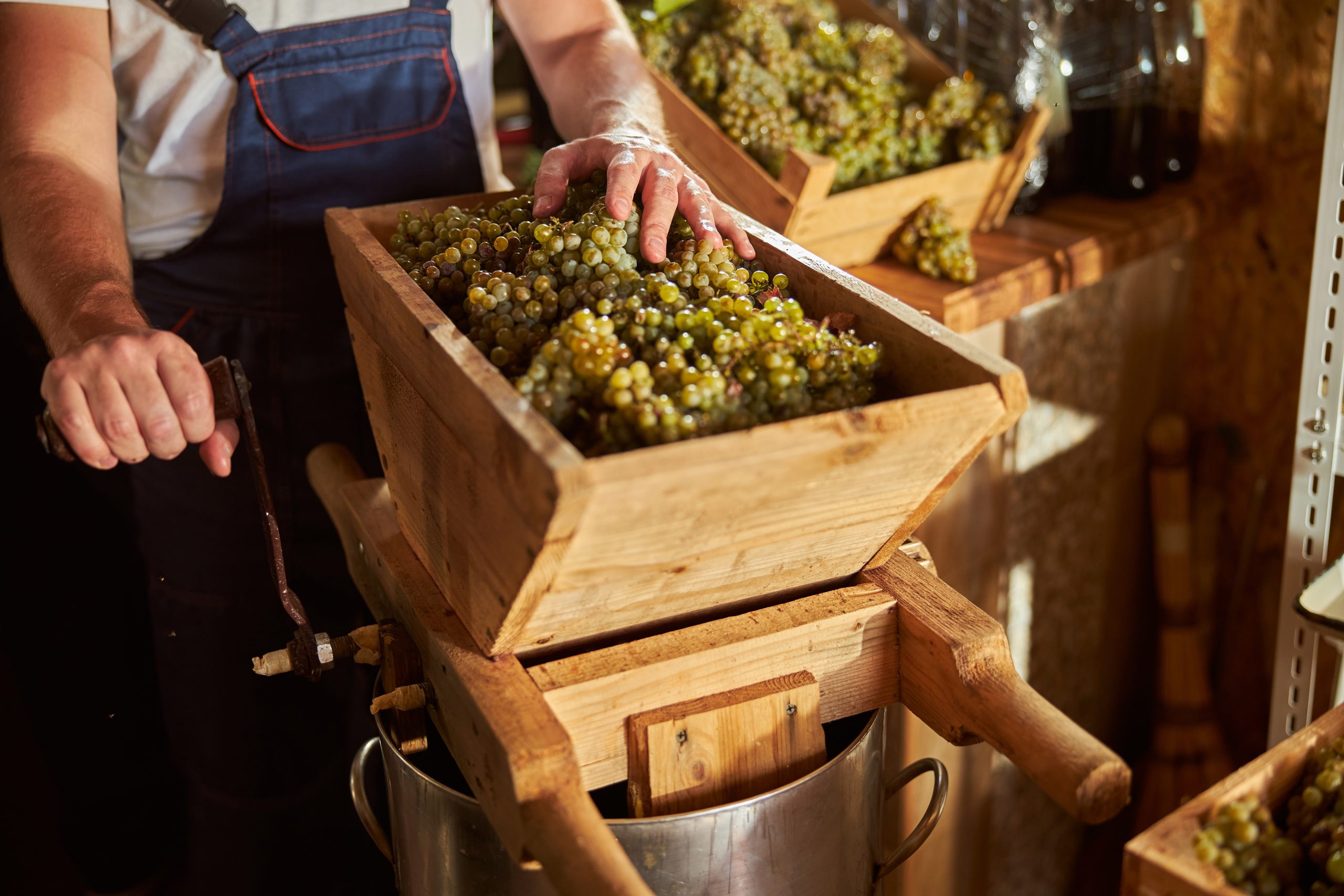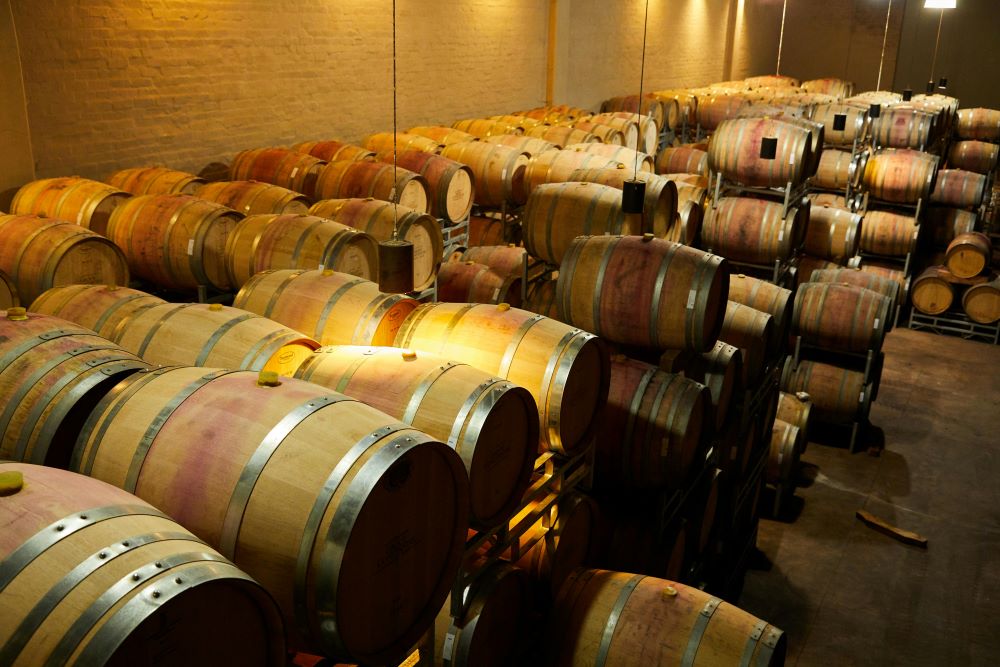Wine making has existed for a long time, with the earliest evidence dating back to 6,000 B.C. in the village of Gadachrili Gora, Georgia.
At this time, prehistoric humans were still dependent on bone and stone tools, which makes it quite fascinating how they processed wines and distributed them to nearby communities back then.
Traditionally, pressing and juicing grapes through our feet has been a common practice for thousands of years. However, this method has been replaced by more revolutionary and modern wine making technology over time.
According to Stephen Batiuk, an archaeologist from the University of Toronto, the villagers from Gadachrili were pressing grapes in cooler environments, fermenting them, and pouring them into smaller jugs. These steps in the wine making process remain part of the basics today, even though the procedure has generally evolved through advancements.
Indeed, there may be differences in how wines are made in different vineyards. But here are the core or general steps that build up the whole wine making experience.
Growing and Harvesting

The first step in winemaking is growing and harvesting grapes.
Grapes are the only ones that can reliably churn out the imperative amount of sugar to make sufficient alcohol to preserve the beverage. Other fruits lack acids, esters, and tannins that make stable, premium wines.
If you want your grapevines to thrive, plant them in deep, well-drained sandy loam soil. Nurture the soil, incorporate organic matter such as manure, compost, etc., and remove weeds. It will take several years of vine tending before the vines produce grapes. However, it may be handy to note that struggling vines produce better-quality fruits.
Harvesting grapes at the right time is a crucial decision that can significantly impact the quality of the wine. Nowadays, winemakers rely on a combination of science and ancient tasting techniques to determine the optimal time for harvesting. This decision-making process is often a collaborative effort involving consultants, vineyard managers, and the winemakers themselves, each bringing their unique expertise to the table.
They harvest grapes by machine or hand, but most wineries prefer using bare hands because they believe mechanical harvesters can be too rough, increasing the risk of damage to the fruits and soil.
Grapes are transported to the winery after harvesting, where winemakers classify them and remove rotten or underripe ones before proceeding to the next step, which is crushing.
Crushing and Pressing

The old wine making methods involved crushing the grapes through a “dance harvest,” where people mashed the fruits by stepping on them. But today, mechanical presses have simplified their lives and removed the need to trample on those grapes using foot movement. Additionally, mechanical grinding improved sanitation for this wine making step, enhanced the longevity and quality of wine, and reduced the need for preservatives.
Here’s an interesting fact: making red and white wine is the same until the crushing step.
For white wines, the must, which is the freshly pressed grape juice containing the fruit’s skin, stems, and seeds, is immediately pressed to separate the juice from the solids. This step is crucial as it prevents the unwanted colour from the grape skin and tannins from seeping into the white wine. In contrast, red wines are made by allowing the grape juice to maintain contact with the grape skin, which imparts colour, tannins, and flavour to the wine.
Moving forward, wine transformation does not always begin in a crusher. Some wineries choose to allow fermentation first inside the grapes, crushing them and enabling the fruit’s pressure to naturally burst before carrying out the pressing step.
Fermentation

Once winemakers have crushed and pressed their grapes, the must should rest. It will eventually start to ferment in 6-12 hours through wild yeasts in the air. Some wineries prefer to remove these yeasts and add another yeast type that can create more controllable outcomes.
Additionally, the conversion of sugar to alcohol begins in the fermentation step. If all the sugar is converted to alcohol, the final wine will not have a sweet taste and will be considered as dry wines. In contrast, some winemakers intend to produce sweeter variants, and they do this by halting the fermentation before the yeast consumes all the sugar, hence producing sweet wines.
The fermentation period, which typically lasts from ten days to a month or more, can be affected by various factors, including the sugar content of the initial must and the environmental conditions. Wines produced in cooler regions tend to have lower alcohol levels, around 10%, while those from warmer areas can reach alcohol levels of up to 15%. These variations in alcohol content contribute to the unique characteristics of wines from different regions.
Clarification

After fermentation, the wine undergoes a crucial step known as clarification. This process involves the removal of unwanted particles or insoluble matter, which can affect the stability and clarity of the wine. Winemakers have several methods at their disposal for this, including racking, filtration, and fining.
In wine racking, makers transport the wine from one vessel (tank or barrel) to another to separate all the sediment formed during fermentation (e.g., dead yeast cells or other solid parts from grapes) and leave them behind in the previous vessel.
For filtration, winemakers pour the wine through a filter to catch large solids. This process can help enhance the wine’s stability and clarity and remove undesired aromas and flavours.
On the other hand, in fining, substances like egg whites or compounds are added to wines for clarification, helping to remove dead yeast cells and solids from wines by putting them down to the bottom of the tank.
For sparkling wines and champagnes, some perform wine riddling, wherein bottles are rotated periodically and tilted until upside down. Doing so allows sediment to slide down to the neck, preparing the wine for disgorgement (where excess yeast is removed from the bottle before the cork is inserted). Disgorgement then leaves a clear wine appearance.
Aging and Bottling

Aging and bottling are the final steps of the wine making process. Wine aging is a crucial stage that allows the wine to develop its full flavour and desirable characteristics. This is achieved through both oxidative and non-oxidative processes. Winemakers can choose to age their wines in a variety of containers, including bottles, stainless steel, ceramic tanks, wooden barrels, or ovals.
The winemaker’s choice of bottling or aging method is not just a technical decision but a creative one that can significantly shape the wine’s final taste, aroma, and overall character. These final steps truly bring the wine to life.
Remember, these are just the foundational wine making steps
Different wineries, different methods. Winemakers can still employ their creativity in producing their wines for the market through steps that are beyond the basics above.
If you’re interested in learning about and experiencing winemakers’ creativity, Crystal Wines is the place to start your wine experience. We are a wine shop in Singapore with an extensive wine portfolio consisting of more than 35 exclusively imported brands–there are many options to explore.
Whether you’re searching for the best wine Singapore offers or simply looking for a delicious bottle to enjoy, we are committed to providing the best quality and competitively priced wines from around the world.
We also offer wine delivery in Singapore, so you can have your favourites brought right to your door, and a wine wholesale option that allows you to stock up on your favourite labels in bulk.
